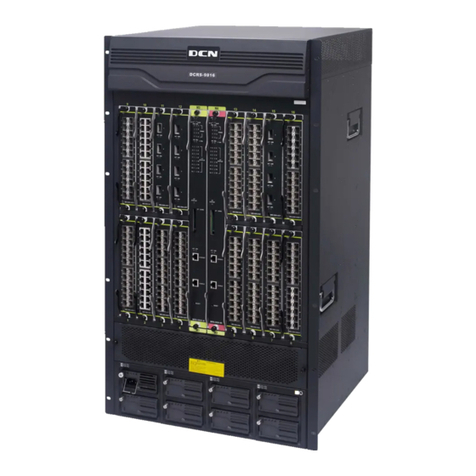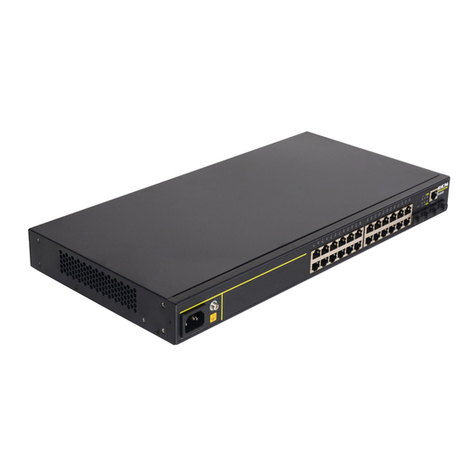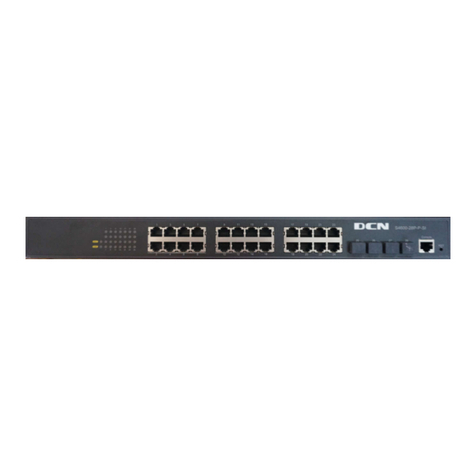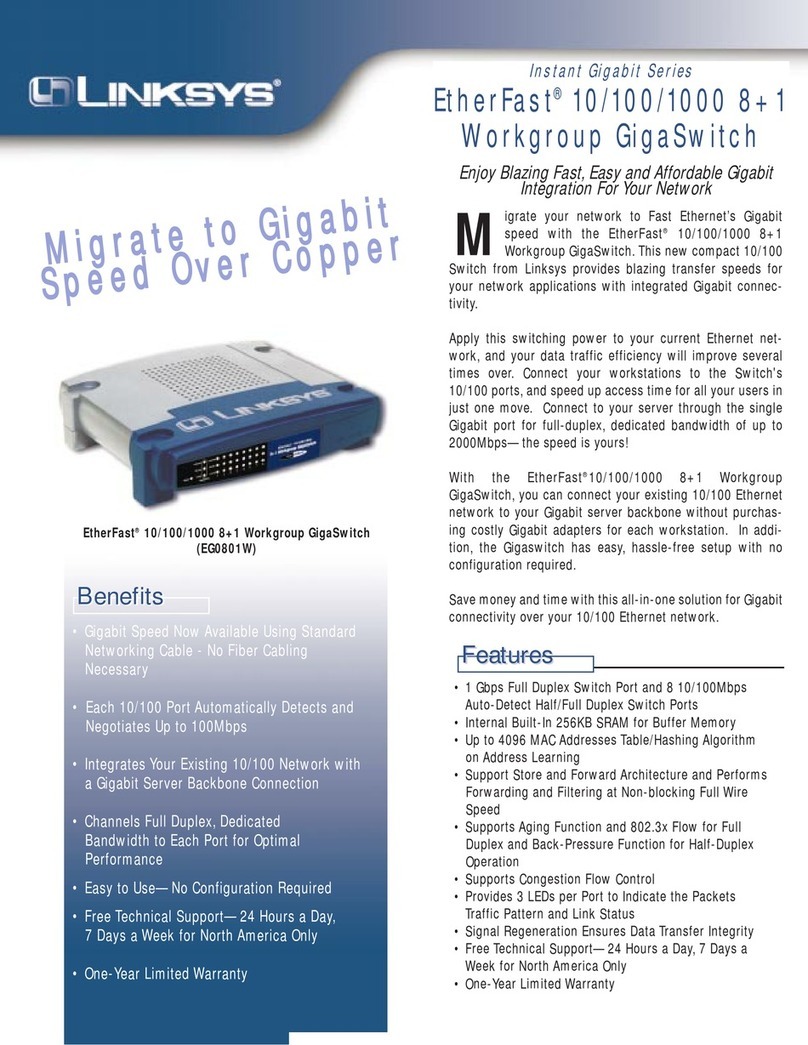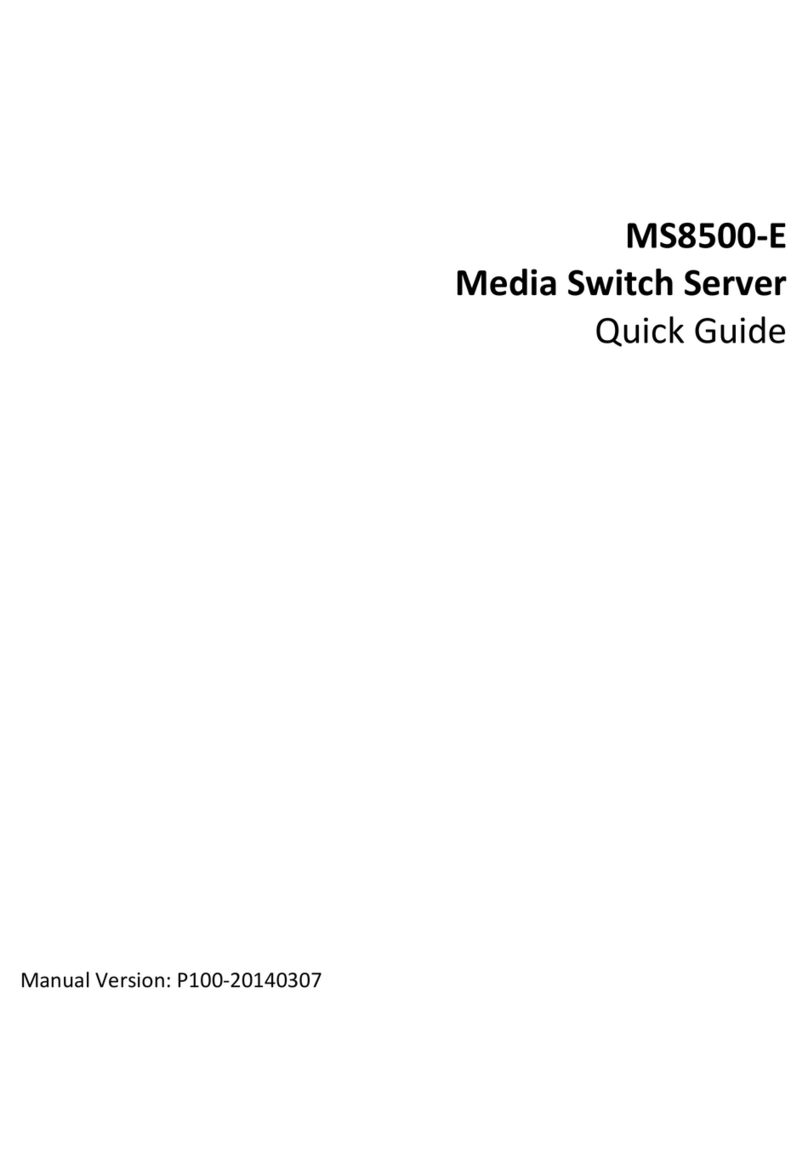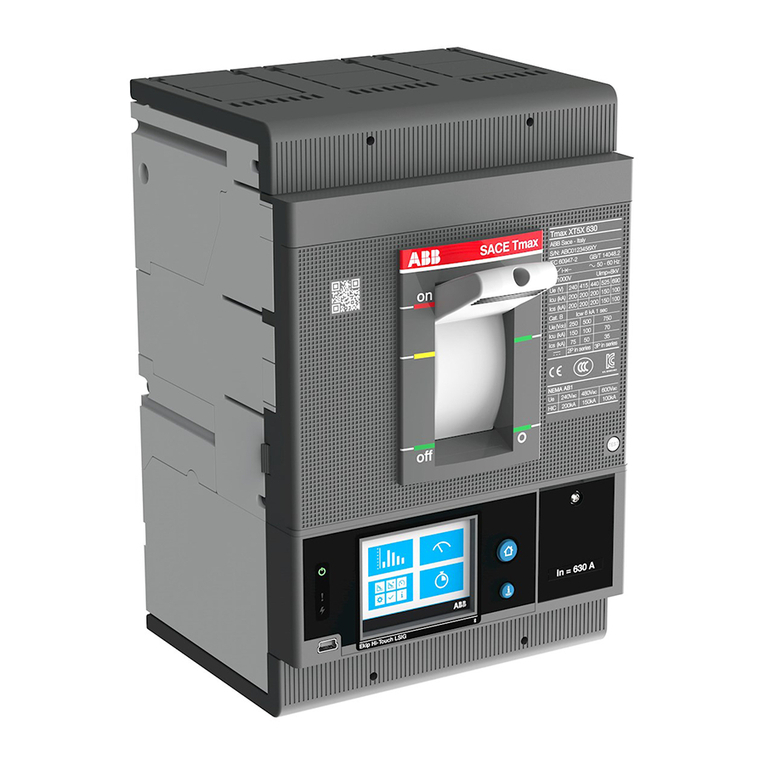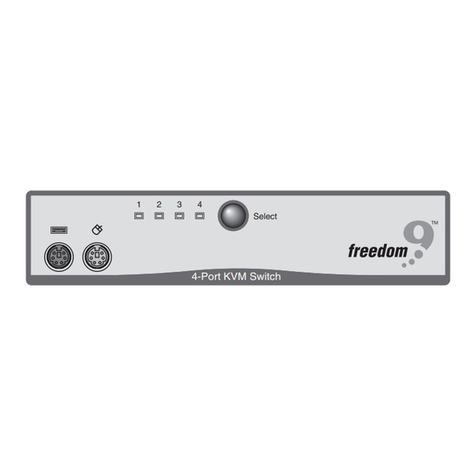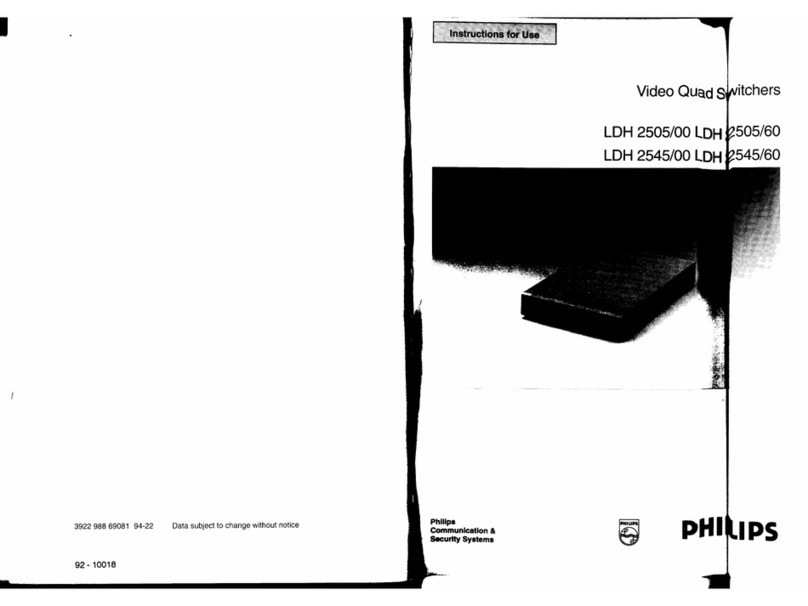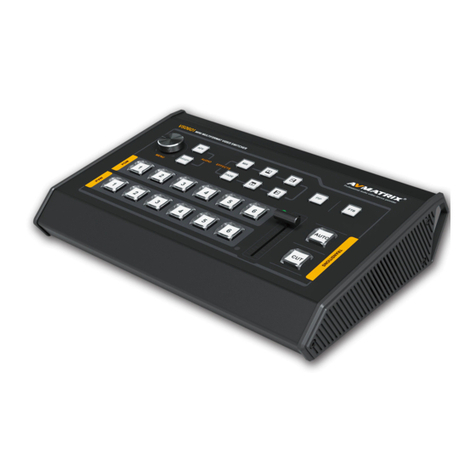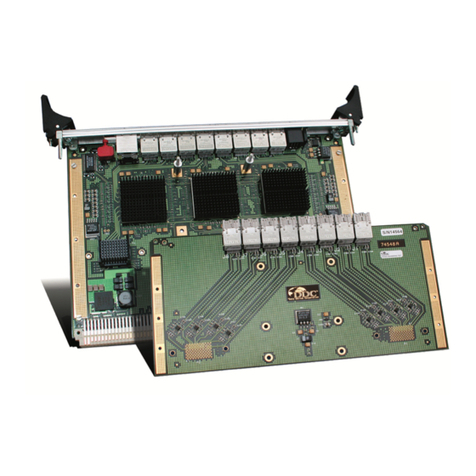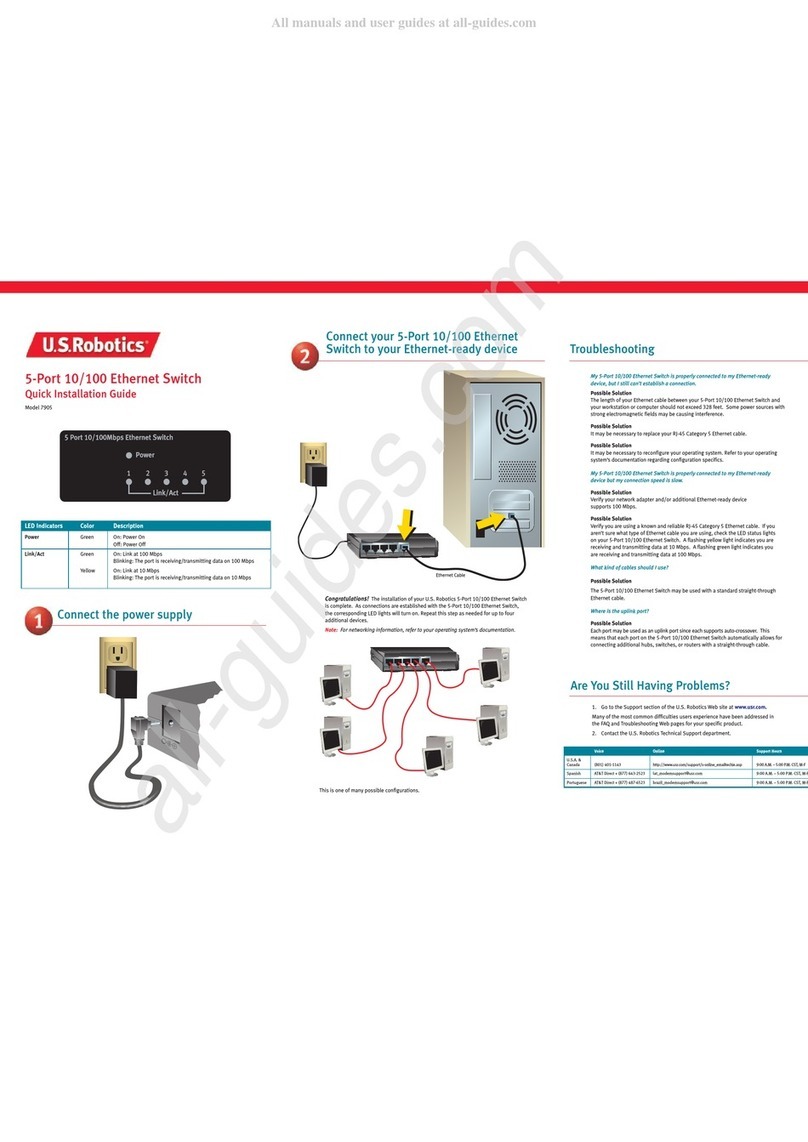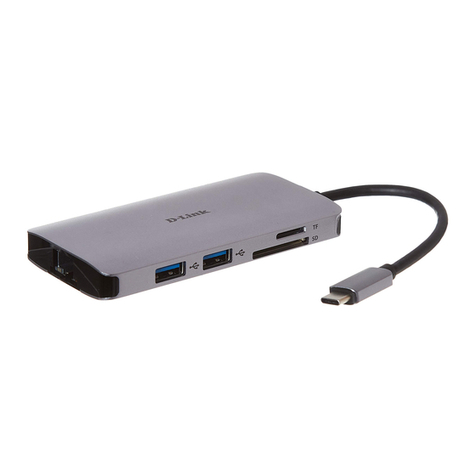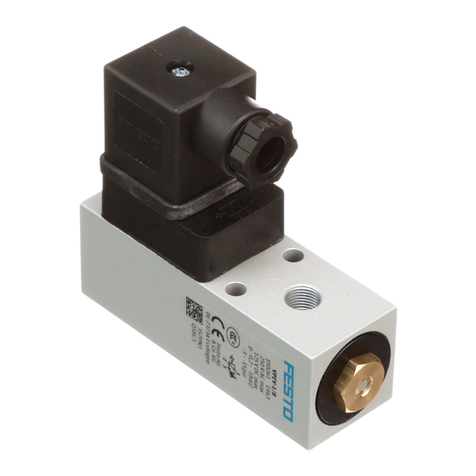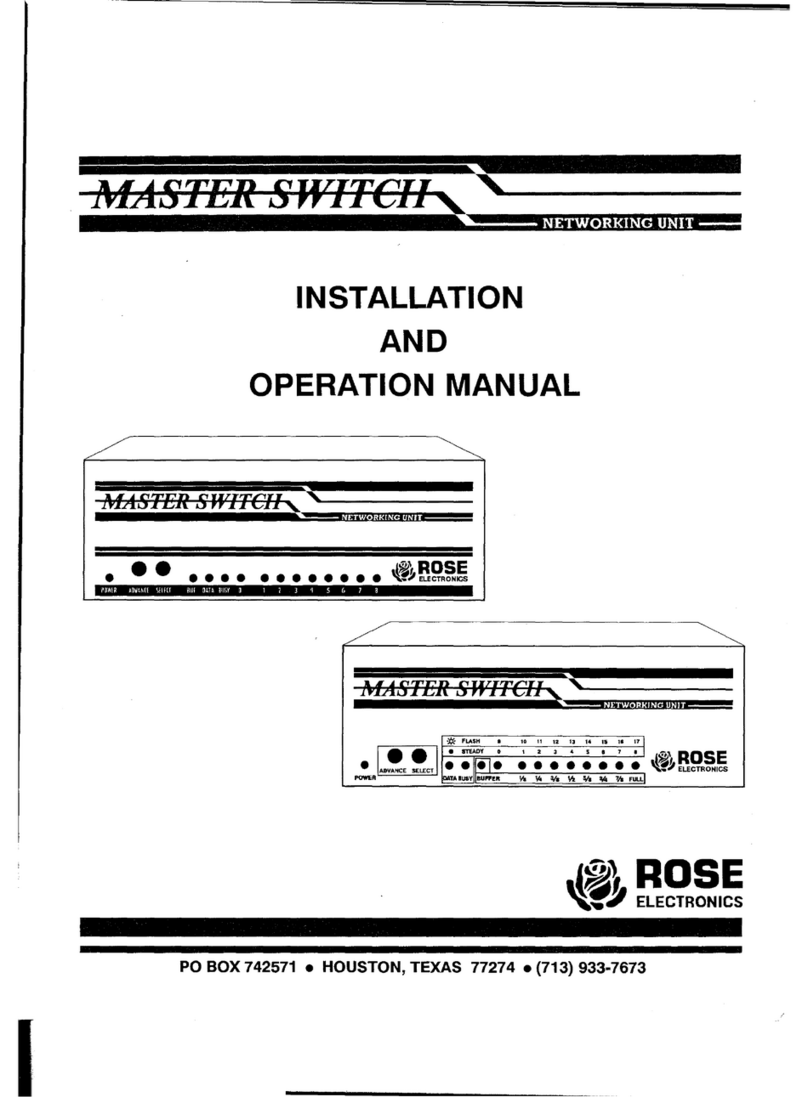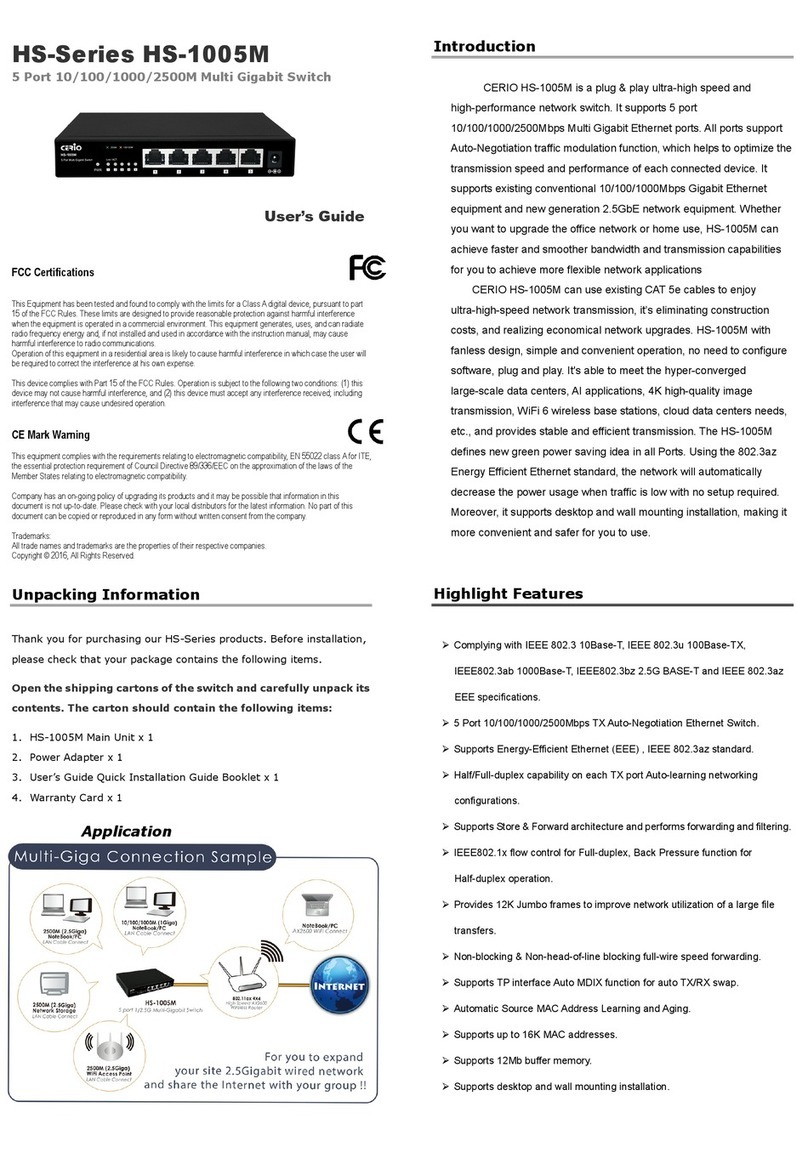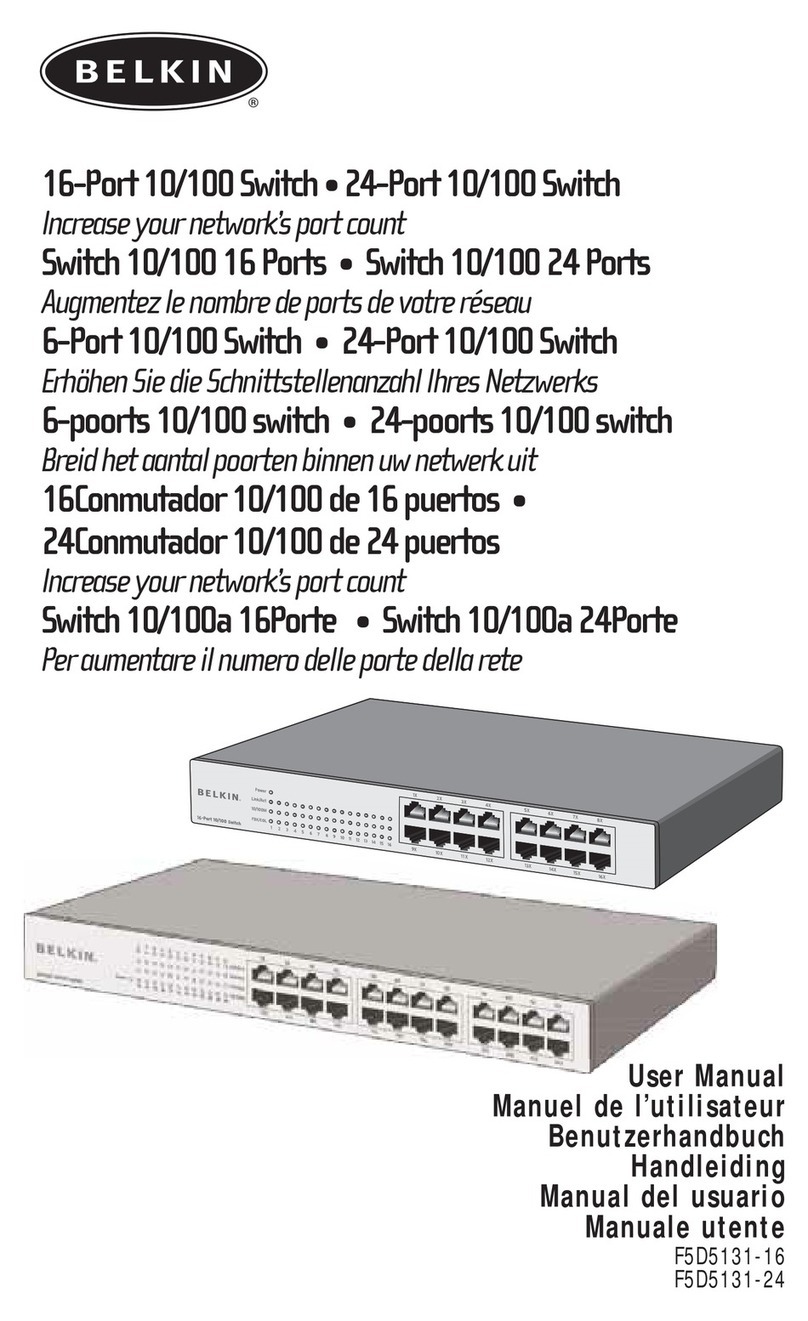DCN S5750E Series User manual

S5750E Series Installation Guide Content
1
Content
CHAPTER 1 INTRODUCTION...................................................1-1
1.1 OVERVIEW..........................................................................................1-1
1.2 INTRODUCTION TO PRODUCT................................................................1-1
1.2.1 Product Overview....................................................................................1-1
1.2.2 Features and Benefits.............................................................................1-1
1.3 PHYSICAL SPECIFICATIONS..................................................................1-3
1.4 DESCRIPTION OF HARDWARE ...............................................................1-3
1.4.1 Front Panel...............................................................................................1-3
1.4.2 Back Panel...............................................................................................1-4
1.4.3 Side Panel................................................................................................1-4
1.4.4 Status LEDs .............................................................................................1-4
1.4.5 Interface Description of Front Panel.....................................................1-5
CHAPTER 2 DEVICE INSTALLATION ......................................2-1
2.1 INSTALLATION NOTICE.........................................................................2-1
2.1.1 Environmental Requirements................................................................2-1
2.1.2 Installation Notice ...................................................................................2-4
2.1.3 A-level declarations ................................................................................2-4
2.1.4 Security Warnings...................................................................................2-4
2.2 INSTALLATION PREPARATION...............................................................2-1
2.2.1 Verify the Package Contents..................................................................2-1
2.2.2 Required Tools and Utilities...................................................................2-1
2.3 DEVICE INSTALLATION.........................................................................2-1
2.3.1 Installing the Switch ...............................................................................2-1
2.3.2 Connecting Console..........................................................................2-2
2.3.3 SFP/SFP+ Transceiver Installation ..................................................2-3
2.3.4 Copper Cable/Fiber Cable Connection............................................2-3
2.3.5 Power Supply Connection................................................................2-4
2.3.6 Ground Cable Connection................................................................2-4

S5750E Series Installation Guide Chapter 1 Introduction
1-1
Chapter 1 Introduction
1.1 Overview
S5750E-52X-P-SI(R2.0) ethernet switches is a series of three layer line spee
d Ethernet switch products by self-development in DC YunKe Networks Co.,Ltd. ,i
ntelligent network management switch used by the network environment which ne
eds the high performance, the bigger port density and the convenient installation.
1.2 Introduction to Product
1.2.1 Product Overview
The S5750E-52X-P-SI(R2.0) switch is capable of providing a 740W PoE pow
er supply and a maximum power output of 30W per port. The switch consists of
48 1Gb optical ports and 4 10Gb optical ports.
1.2.2 Features and Benefits
Various Interfaces
S5750E-52X-P-SI(R2.0) supplies 48 copper ports and 4 10Gb optical ports.
Support 10Gb Ethernet
10Gb Ethernet which adopts full-duplex technology instead of low-speed,
half-duplex CSMA/CD protocol, is a big leap in the evolution of Ethernet. 10Gb Ethernet
can be deployed in star or ring topologies. This series of switches provide broad
bandwidth and powerful processing capacity. It is suitable for metropolitan networks and
wide area networks. It can simplify network structures and reduce cost of network
construction.
Networking Protocols
This series of switches support 802.1d/w/s, 802.1Q, 02.1p, 802.3ad, 802.3x,
GVRP, DHCP and SNTP etc. The switches also support the multicast protocols s
uch as IGMP, DVMRP and PIM. Moreover, This series of switches support RIPv1
/2, OSPF, BGP and IPv6 protocols(Including RIPng, OSPFv3, BGP4 + routing pr
otocols and MLD, PIMv6 and other multicast protocols). All these protocols suppo
rted enable switch to meet the requirements of complex network constructions.
ACL

S5750E Series Installation Guide Chapter 1 Introduction
1-2
This series of switches support comprehensively ACL policies.The traffic can
be classified by source/destination IP addresses, source/destination MAC address
es, IP protocols, TCP/UDP, IP precedence, time ranges and ToS. And various po
licies can be conducted to forward the traffic. By implementing ACL policies, user
s can filter the virus packets such as “Worm.Blaster”, “Worm.Sasser” and “Red C
ode” etc. This series of switches also support IEEE802.1x port based access aut
hentication, which can be deployed with RADIUS, to ensure the port level securit
y and block illegal users.
QoS
This series of switches fully support DiffServ Module. Each port provides 8 priority
queues.Users can specify a queue bandwidth on each port. WRR/SP/SWRR
scheduling is also supported. This series of switches support the port trust. Users can
configure trusted COS, DSCP, IP precedence and port priority. User can also modify
packet’s DSCP and COS values. The traffic can be classified by port, VLAN, DSCP, IP
precedence and ACL table. User can also modify packet’s DSCP and IP precedence
values. Users can specify different bandwidths for voice/data/video to customize
different qualities of service.
3D-SMP Ready
This series of switches are up to the mustard of Self-defending security region
management strategy 3D-SMP according to Digital China Netware. It is supported
interaction with some security system such as firewall, IDS, etc. It can defense the virus
and aggress effectively from the extranet and internet. Thus enhance the security and
stability of the network-wide.
Perfect Web Management.
This series of switches support SNMP, In-band and Out-of band Manageme
nt, CLI and WEB interface and RMON. It can mail the correlative sensitive infor
mation to the administrator abide by SMTP protocol. This series of switches sup
port SSH protocol, ensure the configuration management security of the switch. It
adopts the Digital China centralized web management system DCLM’ for unified
management expedienty and compactly.
Flexible Power Ensure System
This series of switches support two AC power which have the backup functi
on if one of them is fault. The power is hot swappable that improves the expans
ibility and flexibility of the power system.
Abundant Management Ability of Device
This series of switches have the network 1000Mb management port. It can
upgrade the device through the common business electrical port or the network
management port. It can also login the network management web page through t
he common business electrical port or the network management port.

S5750E Series Installation Guide Chapter 1 Introduction
1-3
1.3 Physical Specifications
Item
S5750E-52X-P-SI(R2.0)
Dimension
(W * H * D)
(mm)
440×320×44
Weight
<6kg
Fixed ports
48 100/1000Base-TX auto negotiation ethernet ports
4 10Gb optical ports
Management
ports
1 Console port,1 network management port which supports 1000Mb rate
AC power
The rating voltage range: 100V~240V AC; 50/60HZ
The max voltage range: 90V~264V AC; 47HZ~63HZ
DC power
-52~-57V;18A
Output
power supply
of PoE
Support
The max
Power
Consumption
897W(The maximum power supplied by POE is 740W)
Fan
Support automatic speed adjustment
Operating
Temperature
0℃~50℃
Relative
Humidity
5%~95%
Table 1-1 Physical Specifications
1.4 Description of Hardware
1.4.1 Front Panel
S5750E-52X-P-SI(R2.0) ethernet switches provide 48 100/1000Base-TX auto
negotiation ehternet ports, 4 10Gb optical ports, 4 function LEDs, 1 network
management port, 1 USB interface, 1 Mode button, 1 Console port. As shown:

S5750E Series Installation Guide Chapter 1 Introduction
1-4
Fig 1-1 Front Panel of S5750E-52X-P-SI(R2.0)
1.4.2 Back Panel
S5750E-52X-P-SI(R2.0) supplies 1 ground screw hole and power plug-in
interfaces.
Fig 1-2 Back Panel of S5750E-52X-P-SI(R2.0)
1.4.3 Side Panel
S5750E-52X-P-SI(R2.0) supplies 4 fans:
Fig 1-3 Side Panel of S5750E-52X-P-SI(R2.0)
1.4.4 Status LEDs
LEDs of switch show the corresponding state. Mainboard LEDs include two parts,
one is RJ45 interface LEDs, SFP/SFP+ interface LEDs. They show each port state at
plug-in, each port corresponds a LED.
Panel Symbol
Status
Description
PWR
On (Green)
Power is operating normally
Off
Power is not operating
DIAG
On(Green,
blink)
System is loading
On (Green)
System is operating normally
PoE
On (Green)
Port inficator indicates POE power
supply status
Off
Port indicator inficates the link act
status

S5750E Series Installation Guide Chapter 1 Introduction
1-5
MGMT
On (Green)
Network management port 10M / 100M
/ 1G is linking
Off
Network management port is not
linking
Blink
Data forwarding
Table 1-2 S5750E-52X-P-SI(R2.0) System LEDs
1.4.5 Interface Description of Front Panel
Port mode
Spec
RJ-45 port
10/100/1000Mbps auto negotiation
MDI/MDI-X cable mode auto negotiation
5 kinds of UTP: 100 m
SFP
SFP-SX-L transceiver
1000Base-SX SFP(850nm,MMF,550m)
SFP-LX-L transceiver
1000Base-LX SFP(1310nm, SMF, 10km or
MMF, 550m)
SFP-LX-20-L transceiver
1310nm lightwave, 9/125um single mode
fiber: 20km
SFP-LX-40 transceiver
9/125um single mode fiber: 40km
SFP-LH-70-L transceiver
9/125um single mode fiber: 70km
SFP-LH-120-L transceiver
9/125um single mode fiber: 120km
SFP+
SFPX-SR transceiver
10GBase-SR SFP+ (850nm,MMF,550m)
SFPX-LR transceiver
10GBase-LR SFP+(1310nm, SMF, 10km)
DAC-SFPX
DAC-SFPX-3M
DAC-SFPX-5M
AOC-SFPX
AOC-SFPX-5M
AOC-SFPX-10M
Table 1-3 interface descriptions

S5750E Series Installation Guide Chapter 2 Device Installation
2-1
Chapter 2 Device Installation
2.1 Installation Notice
To ensure the proper operation of switch and your physical security, please read
carefully the following installation guide.
2.1.1 Environmental Requirements
The switch must be installed in a clean area. Otherwise, the switch may be damaged
by electrostatic adherence.
Maintain the temperature within 0 to 50 °C and the humidity within 5% to 95%,
non-condensing.
The switch must be put in a dry and cool place. Leave sufficient spacing around the
switch for good air circulation.
The switch must work in the range of AC power input: 100 ~ 240VAC (50/60Hz) and DC
power input:-52~-57V;18A.
The switch must be well grounded in order to avoid ESD damage and physical injury
of people.
The switch should avoid the sunlight perpendicular incidence. Keep the switch away
from heat sources and strong electromagnetic interference sources.
The switch must be mounted to a standard 19’’ rack or placed on a clean level
desktop.
2.1.1.1 Dust and Particles
Dust is harmful to the safe operation of switch. Dust can lead to electrostatic
adherence, especially likely under low relative humidity, causing poor contact of metal
connectors or contacts. Electrostatic adherence will result in not only reduced product
lifespan, but also increased chance of communication failures. The recommended value
for dust content and particle diameter in the site is shown below:
Max Diameter (µm)
0.5
1
3
5
Max Density
(particles/m³)
1.4×105
7×105
2.4×105
1.3×105
Table 2-1 Environmental Requirements: Dust
In addition, salt, acid and sulfide in the air are also harmful to the switch. Such
harmful gases will aggravate metal corrosion and the aging of some parts. The site should

S5750E Series Installation Guide Chapter 2 Device Installation
2-2
avoid harmful gases, such as SO2, H2S, NO2, NH3and Cl2, etc. The table below details the
threshold value.
Gas
Average (mg/m³)
Max (mg/m³)
SO2
0.2
1.5
H2S
0.006
0.03
NO2
0.04
0.15
NH3
0.05
0.15
Cl2
0.01
0.3
Table 2-2 Environmental Requirements: Particles
2.1.1.2 Temperature and Humidity
Although the switch is designed to use fans, the site should still maintain a desirable
temperature and humidity. High-humidity conditions can cause electrical resistance
degradation or even electric leakage, degradation of mechanical properties and corrosion
of internal components. Extreme low relative humidity may cause the insulation spacer to
contract, making the fastening screw insecure. Furthermore, in dry environments, static
electricity is liable to be produced and cause harm to internal circuits. Temperature
extremes can cause reduced reliability and premature aging of insulation materials, thus
reducing the switch’s working lifespan. In the hot summer, it is recommended to use
air-conditioners to cool down the site. And the cold winter, it is recommenced to use
heaters.
The recommended temperature and humidity are shown below:
Temperature:
Relative humidity
Long term condition
Short term condition
Long term condition
Short term
condition
15 ~ 30°C
0 ~ 50°C
40 ~ 65%
5 ~ 95%
Table 2-3 Environmental Requirements: Temperature and Humidity
Caution!
A sample of ambient temperature and humidity should be taken at 1.5m above the
floor and 0.4m in front of the switch rack, with no protective panel covering the front and
rear of the rack. Short term working conditions refer to a maximum of 48 hours of
continued operation and an annual cumulative total of less than 15 days. Formidable
operation conditions refers to the ambient temperature and relative humidity value that
may occur during an air-conditioning system failure, and normal operation conditions
should be recovered within 5 hours.

S5750E Series Installation Guide Chapter 2 Device Installation
2-3
2.1.1.3 Power Supply
Before powering on the power supply, please check the power input to ensure proper
grounding of the power supply system. The input source for the switch should be reliable
and secure; a voltage adaptor can be used if necessary. The building’s circuit protection
system should include in the circuit a fuse or circuit-breaker of no greater than 240 V, 10A.
It is recommended to use a UPS for more reliable power supplying. .
Caution!
Improper power supply system grounding, extreme fluctuation of the input source,
and transients (or spikes) can result in larger error rate, or even hardware damage!
2.1.1.4 Preventing Electrostatic Discharge Damage
Static electric discharges can cause damage to internal circuits, even the entire
switch. Follow these guidelines for avoiding ESD damage:
Ensure proper earth grounding of the device;
Perform regular cleaning to reduce dust;
Maintain proper temperature and humidity;
Always wear an ESD wrist strap and antistatic uniform when in contact with circuit
boards.
2.1.1.5 Anti-interference
All sources of interference, whether from the device/system itself or the outside
environment, will affect operations in various ways, such as capacitive coupling, inductive
coupling, electromagnetic radiation, common impedance (including the grounding system)
and cables/lines (power cables, signal lines, and output lines). The following should be
noted:
Precautions should be taken to prevent power source interruptions;
Provide the system with a dedicated grounding, rather than sharing the grounding
with the electronic equipment or lightning protection devices;
Keep away from high power radio transmitters, radar transmitters, and high frequency
strong circuit devices;
Provide electromagnetic shielding if necessary.
2.1.1.6 Rack Configuration
The dimensions of the switch is designed to be mounted on a standard 19’’ rack,
please ensure good ventilation for the rack.
Every device in the rack will generate heat during operation, therefore vent and fans
must be provided for an enclosed rack, and devices should not be stacked closely.
When mounting devices in an open rack, care should be taken to prevent the rack
frame from obstructing the switch ventilation openings. Be sure to check the

S5750E Series Installation Guide Chapter 2 Device Installation
2-4
positioning of the switch after installation to avoid the aforementioned.
Caution!
If a standard 19’’ rack is not available, the switch can be placed on a clean level
desktop, leave a clearance of 100mm around the switch for ventilation, and do not place
anything on top of the switch.
2.1.2 Installation Notice
Read through the installation instruction carefully before operating on the system.
Make sure the installation materials and tools are prepared. And make sure the
installation site is well prepared.
During the installation, users must use the brackets and screws provided in the
accessory kit. Users should use the proper tools to perform the installation. Users
should always wear antistatic uniform and ESD wrist straps. Users should use
standard cables and connecters.
After the installation, users should clean the site. Before powering on the switch,
users should ensure the switch is well grounded. Users should maintain the switch
regularly to extend the lifespan of the switch.
2.1.3 A-level declarations
According to the requirements of standard GB9254-2008 "Radio Disturbance Limits
and Measurement Methods for Information Technology Equipment", information
technology equipment can be divided into two categories:A-level ITE and B-level ITE.
Class A ITE is a category of all other ITE which satisfies the class A ITE limits but not
the class B ITE limits. The following warning shall be included in the instructions for use:
Warning
This is classA product. In a domestic environment this product may cause radio
interference in which case the user may be required to take adequate measures.
2.1.4 Security Warnings
When using SFP transceiver, do not stare directly at the fiber bore when the switch is
in operation. Otherwise the laser may hurt your eyes.
Do not attempt to conduct the operations which can damage the switch or which can
cause physical injury.
Do not install, move or disclose the switch and its modules when the switch is in
operation.
Do not open the switch shell.

S5750E Series Installation Guide Chapter 2 Device Installation
2-5
Do not drop metals into the switch. It can cause short-circuit.
Do not touch the power plug and power socket.
Do not place the tinder near the switch.
Do not configure the switch alone in a dangerous situation,
Use standard power sockets which have overload and leakage protection.
Inspect and maintain the site and the switch regularly.
Have the emergence power switch on the site. In case of emergence, switch off the
power immediately.
Caution!
Potential risk include: Electric leakage, Power supply arcing, Power line breakage,
Imperfect earth, Overload circuit and Electrical short circuit. If electric shock, fire, electrical
short circuit occurs, please cut off the electricity supply and alarm rapidly. Rescue the
injured person in the contingency under inherently safe, give the injured person proper
first aid treatment according to the injury state, and seek help from the Medical
Emergency using various ways.

S5750E Series Installation Guide Chapter 2 Device Installation
2-1
2.2 Installation Preparation
2.2.1 Verify the Package Contents
Please unpack the shipping package and verify carefully the contents inside.
2.2.2 Required Tools and Utilities
The required tools and utilities are shown below:
Cross screwdrivers
Flat-blade screwdriver
ESD wrist strap
Antistatic uniform
Caution!
Users should prepare the required tools and utilities by themselves.
2.3 Device Installation
2.3.1 Installing the Switch
Please mount switch on the 19’’ rack as below:
1. Attach the 2 brackets on the switch with screws provided in the accessory kit.
Figure 2-1 switch install sketch map on the rack using stock
2. Put the bracket-mounted switch smoothly into a standard 19’’ rack. Fasten the switch
to the rack with the screws provided. Leave enough space around the switch for good
air circulation.
Caution!
The brackets are used to fix the switch on the rack. They can’t serve as a bearing.
Because the device is heavy, we suggest installing the rack tray on the bottom of the
switch. Do not place anything on top of the switch. Do not block the blowholes on the
switch to ensure the proper operation of the switch. If there is no tray, add the lugs (The

S5750E Series Installation Guide Chapter 2 Device Installation
2-2
device provides it) on the back of the switch to make it fix on the rack.
There is no back horn iron in standard configuration. If users bought it, the figure of
installation is below:
Figure 2-2 The figure of switch installing on the rack by using the front and back horn iron
Caution!
The brackets are used to fix the switch on the rack. They can’t serve as a bearing.
Please place a rack shelf under the switch. Do not place anything on top of the switch. Do
not block the blowholes on the switch to ensure the proper operation of the switch.
2.3.2 Connecting Console
switch provide a serial RJ45 console port.
Fig 2-3 Connecting Console to switch
The connection procedure is listed below:
1. Find the console cable provided in the accessory kit. Attach the RJ45 end to console
port of the switch.
2. Connect the other side of the console cable to a character terminal (PC).
3. Power on the switch and the character terminal. Configure the switch through the
character terminal.

S5750E Series Installation Guide Chapter 2 Device Installation
2-3
2.3.3 SFP/SFP+ Transceiver Installation
Switch has multiple 10Gb interfaces and provides multiple 10Gb SFP/SFP+ transceiver
slots.
The procedure for installing the SFP/SFP+ transceiver is shown below:
Step 1: Put on a ESD wrist strap (or antistatic gloves)
Step 2: Insert the SFP/SFP+ transceiver to the guide rail inside the fiber interface line card.
Do not put the SFP/SFP+ transceiver up-side-down.
Step 3: Push the SFP/SFP+ transceiver along the guide rail gently until you feel the
transceiver snap into place at the bottom of the line card.
Note: the SFP/SFP+ transceiver is hot swappable.
Caution!
Do not stare directly at the 2 fiber bore in the SFP/SFP+ transceiver when the switch is in
operation, otherwise the laser may hurt your eyes.
2.3.4 Copper Cable/Fiber Cable Connection
Copper cables should be connected as below:
Step 1: Insert one end of the Ethernet cable to the RJ-45 Ethernet port in the switch
copper cable line card;
Step 2: Insert the other end of the Ethernet cable to the RJ-45 Ethernet port of some other
device;
Step 3: Check all status indicators for the corresponding ports; a lighted LED indicates that
the link has been established, otherwise the link is not ready and the cable should be
examined.
Caution!
Please verify the sign above the port to ensure using the right port. Connecting to wrong
ports might damage the switch.
Fiber cables should be connected as below:
Step 1: remove the protective plug from the SFP/SFP+ fiber transceiver bore; Remove the
protective cap from one end of the fiber cable. Keep the fiber end clean and neat.
Step 2: Attach one end of the fiber cable to the SFP/SFP+ transceiver, and attach the
other end to the transceiver of the other devices. Note: SFP/SFP+ transceiver’s TX port
should be connected to RX port of other device, and SFP/SFP+ transceiver’s RX port
should be connected to TX port of other device.
Step 3: Check the fiber port status indicator, a light LED indicates that the link has been
established; otherwise the link is not ready and should be examined.

S5750E Series Installation Guide Chapter 2 Device Installation
2-4
Caution!
Please verify the sign above the port to ensure using the other ports. Connecting to wrong
ports might damage the transceiver or the other ports. When connecting other devices
through a fiber cable to the switch, the output power of the fiber cable must not exceed the
maximum received power of the corresponding modules. Otherwise, it will damage the
fiber transceiver. Do not stare at the fiber bore when the switch is in operation. That may
hurt your eyes.
2.3.5 Power Supply Connection
Switch uses 220V AC or -52~-57V;18A DC DC power. Please read the power input
specification for the detailed information.
Power supply connection procedure is described as below:
1. Insert one end of the power cable provided in the accessory kit into the power source
socket (with overload and leakage protection), and the other end to the power socket in
the back panel of the switch.
2. Check the power status indicator in the front panel of the switch. The corresponding
power indicator should light. Switch is self-adjustable for the input voltage. As soon as the
input voltage is in the range printed on the switch surface, the switch can operate
correctly.
3. When the switch is powered on, it executes self-test procedure and startups.
Caution!
The input voltage must be within the required range, otherwise the switch can be
damaged or malfunction. Do not open the switch shell without permission. It can cause
physical injury.
2.3.6 Ground Cable Connection
Grounding: The chassis of the equipment must be grounded properly so that the
lightning can flow to the ground, which improves the capability of the chassis for resisting
the electromagnetic interference.
1. Ensure that the grounding cable is connected correctly so that the equipment is
protected against lightning and interference. The correct connection of the grounding
cable is an important measure to ensure the human safety.
2. Connect the chassis to the ground by using a grounding cable. The grounding
resistance must be smaller than 0.10 ohms and the gauge of the grounding cable must be
greater than 10AWG and the length is 50 cm.

S5750E Series Installation Guide Chapter 2 Device Installation
2-5
3. Installation steps:
Step 1: Ensure the power switch is set to the off position.
Step 2: Use the screwdriver to turn the screws on the earth ground screw point.
Step 3: Strip one end of the ground wire to the ground hole of system.
Step 4: Connect the other end of the ground wire to a suitable grounding point of building
at your side.
This manual suits for next models
1
Table of contents
Other DCN Switch manuals
